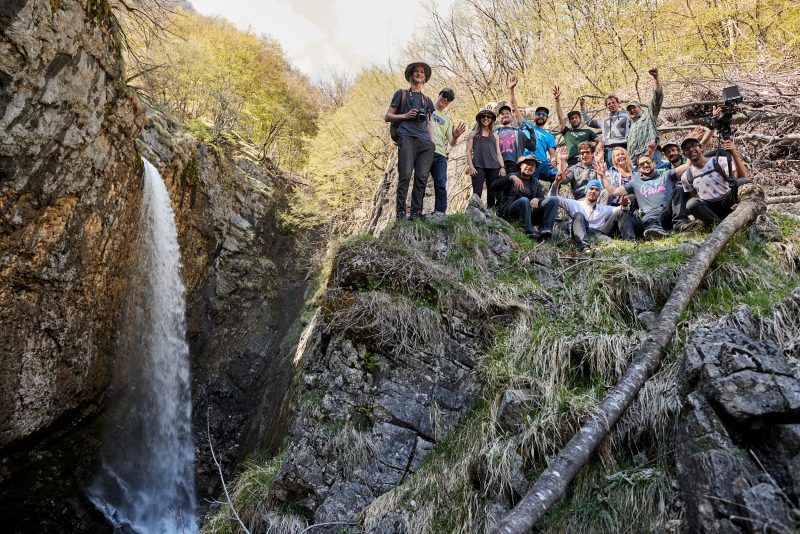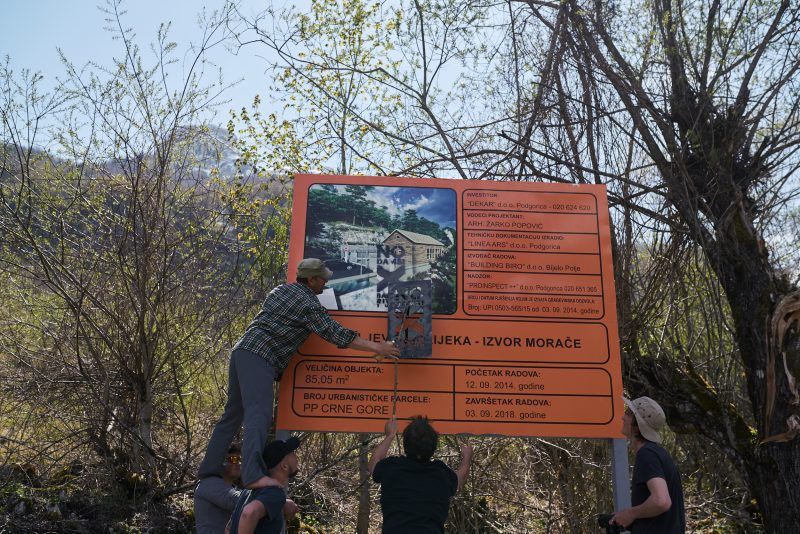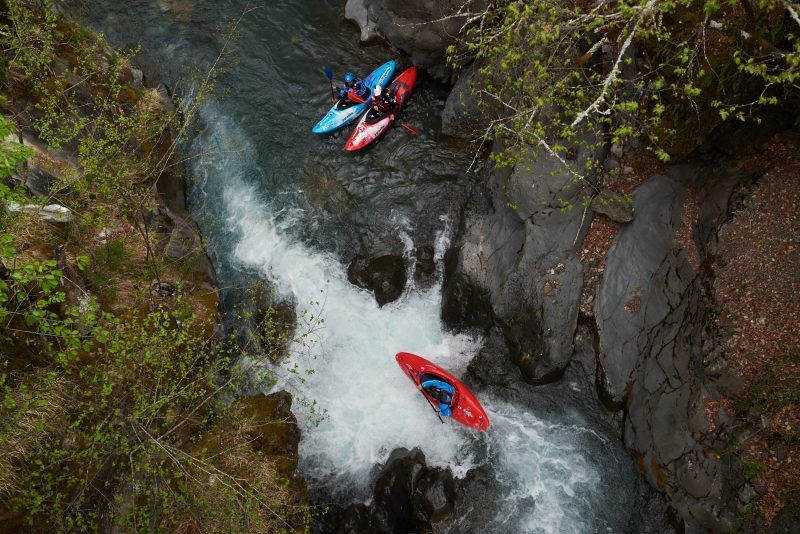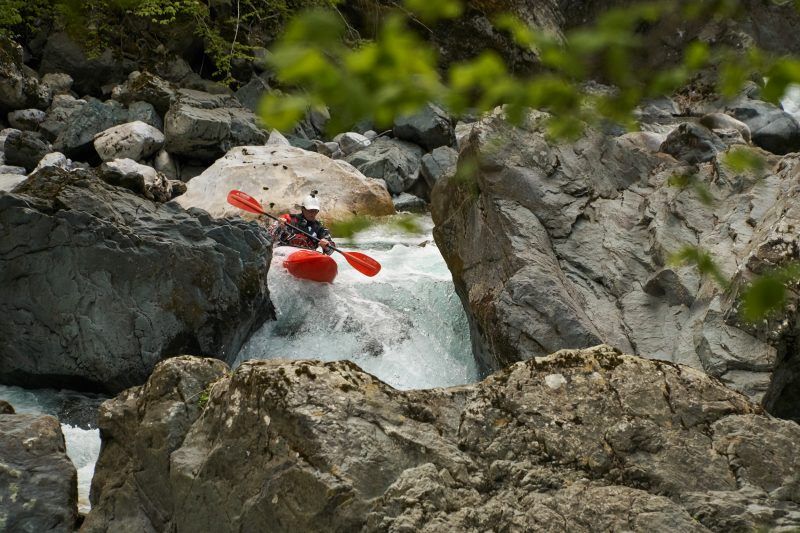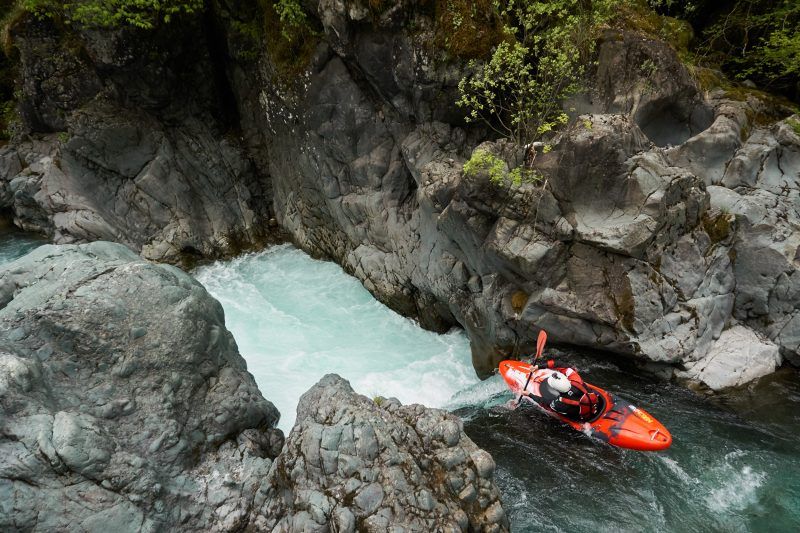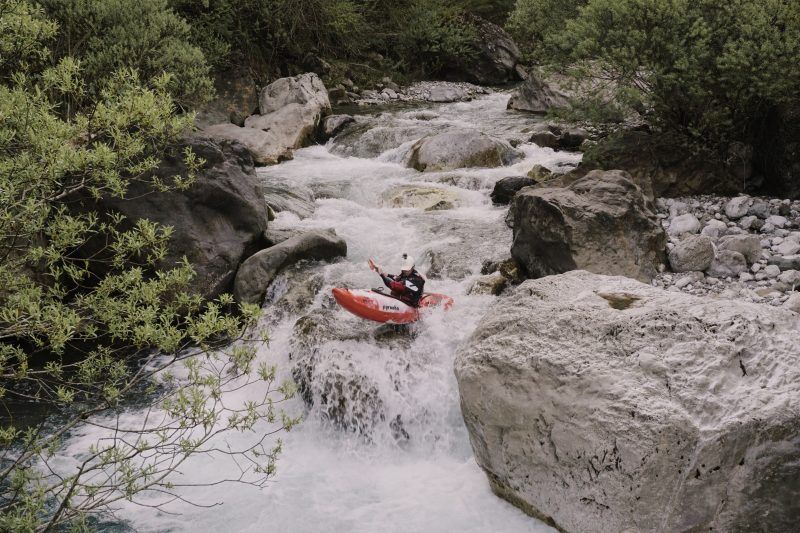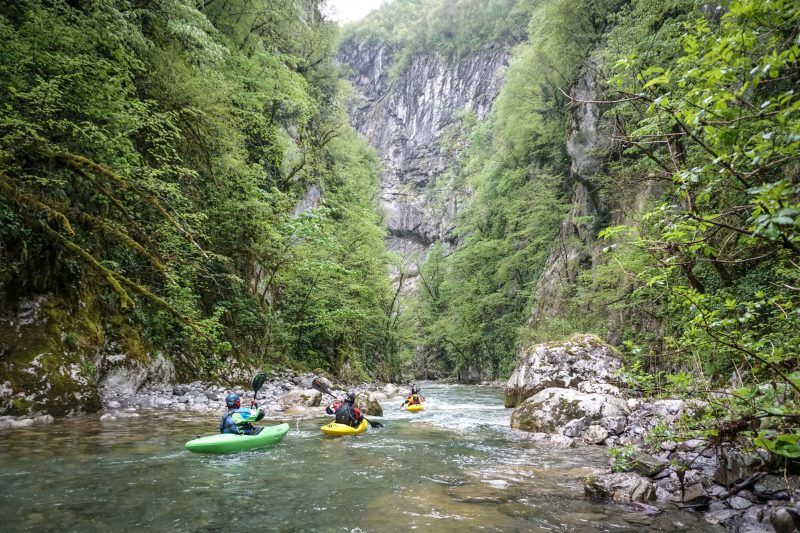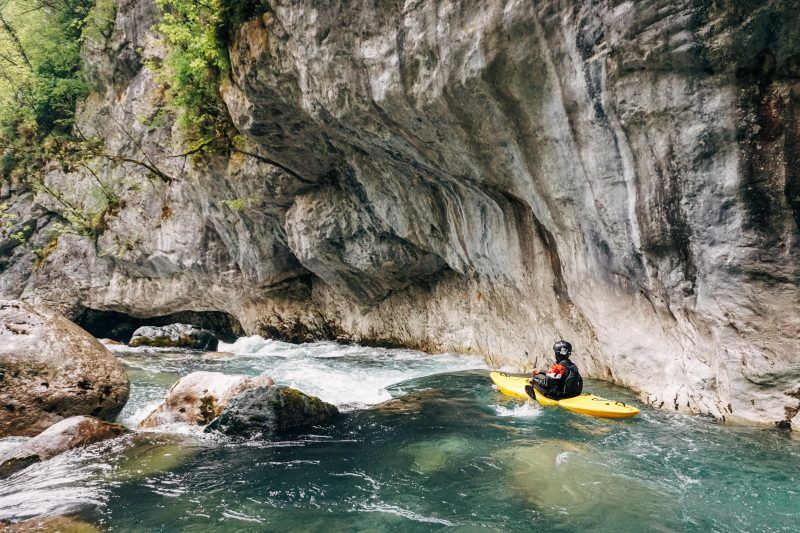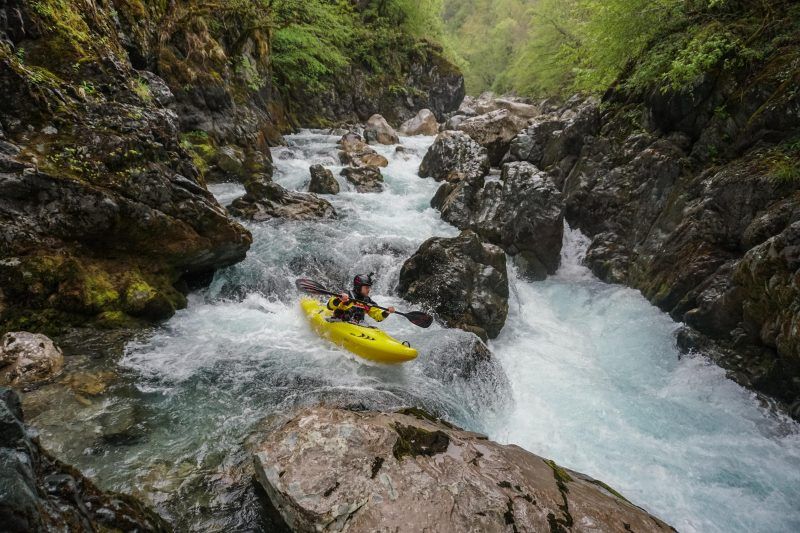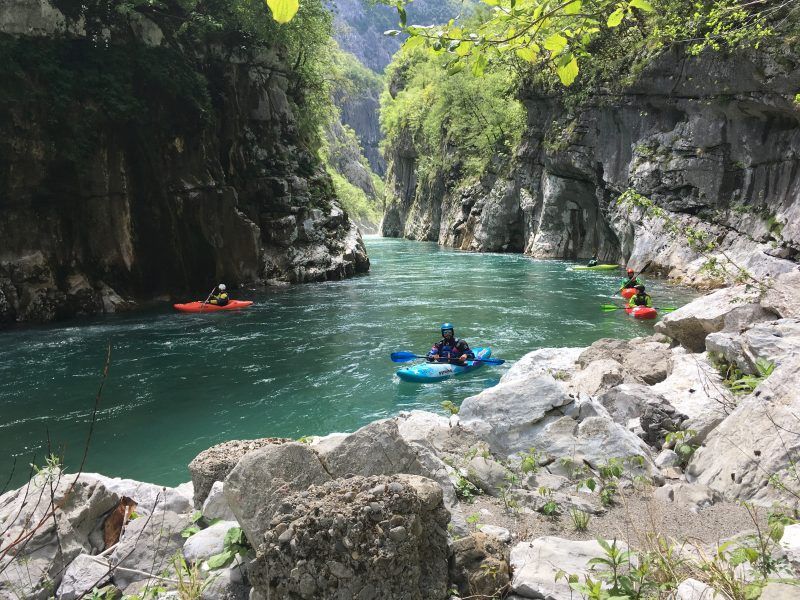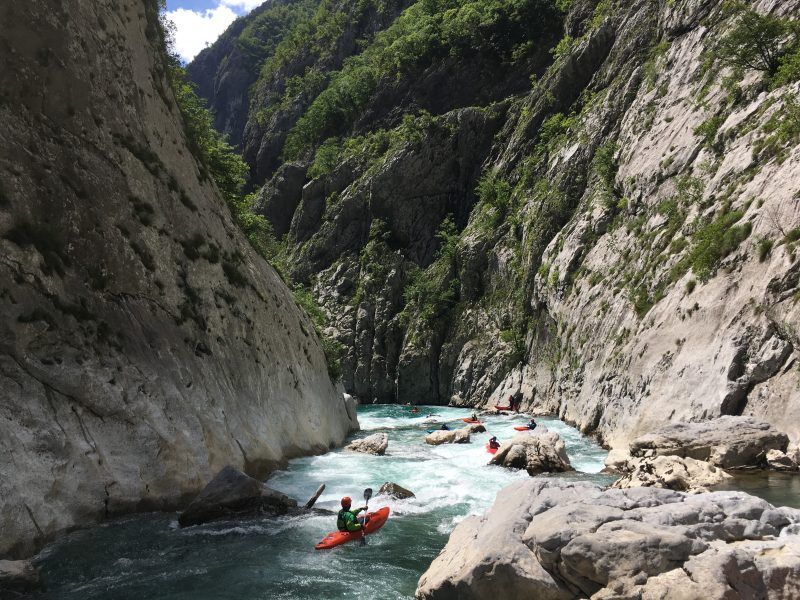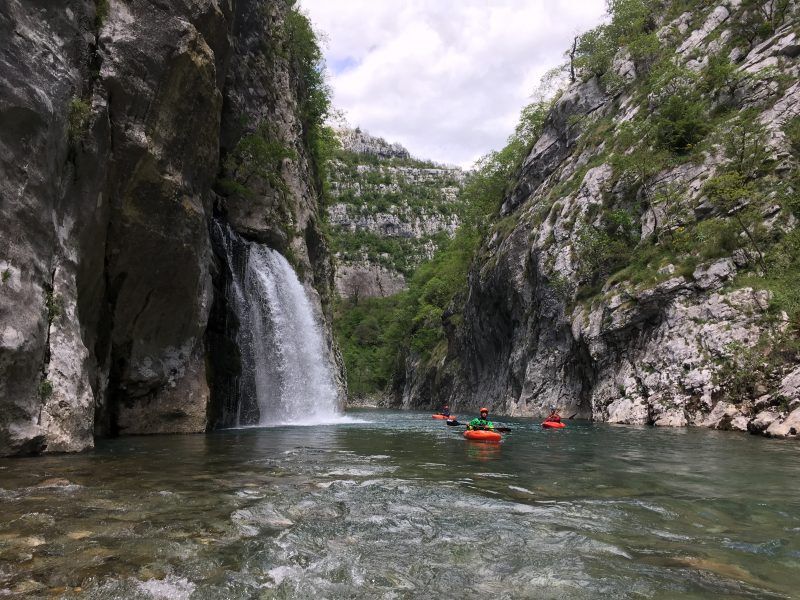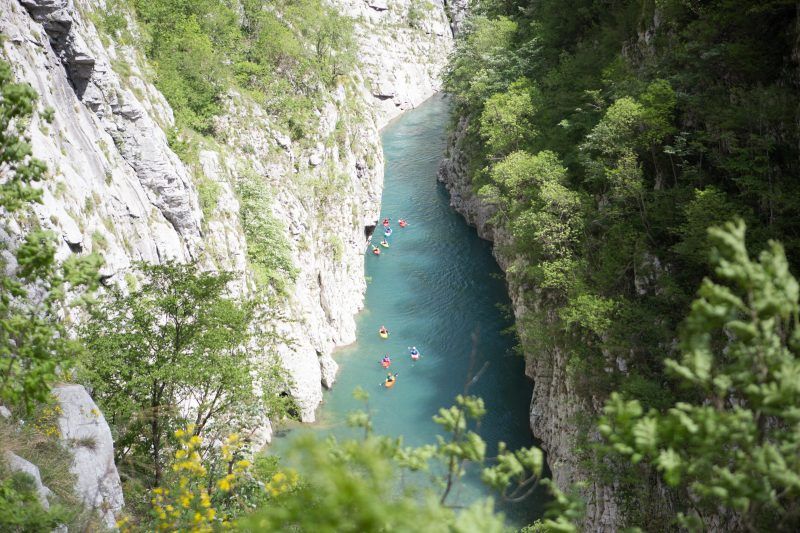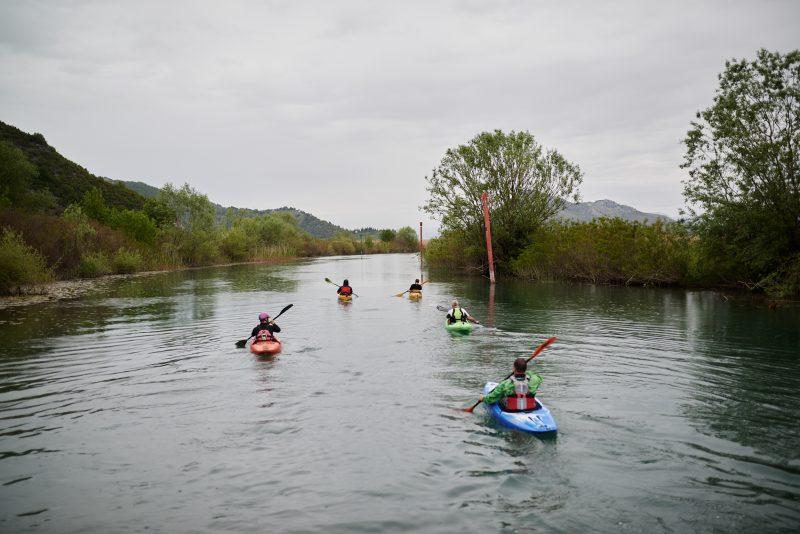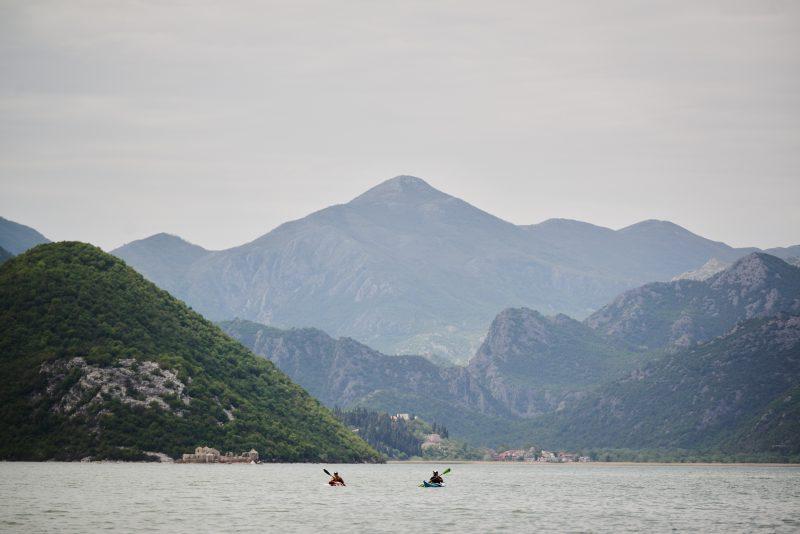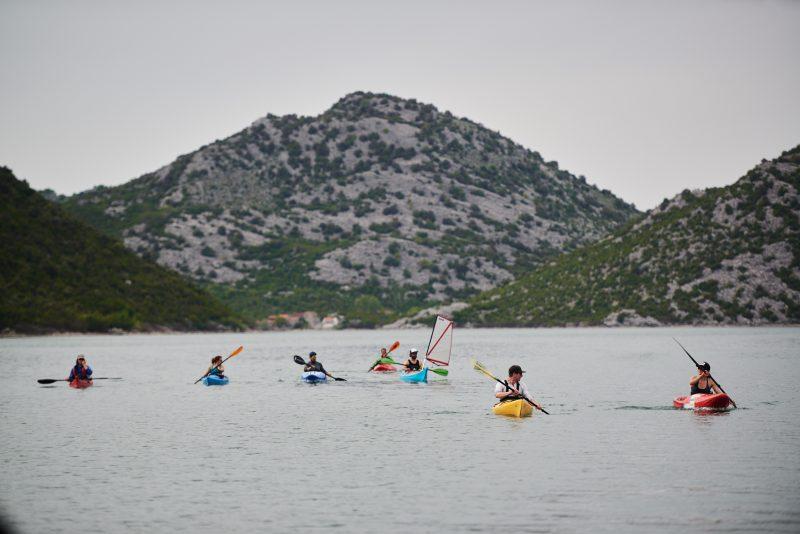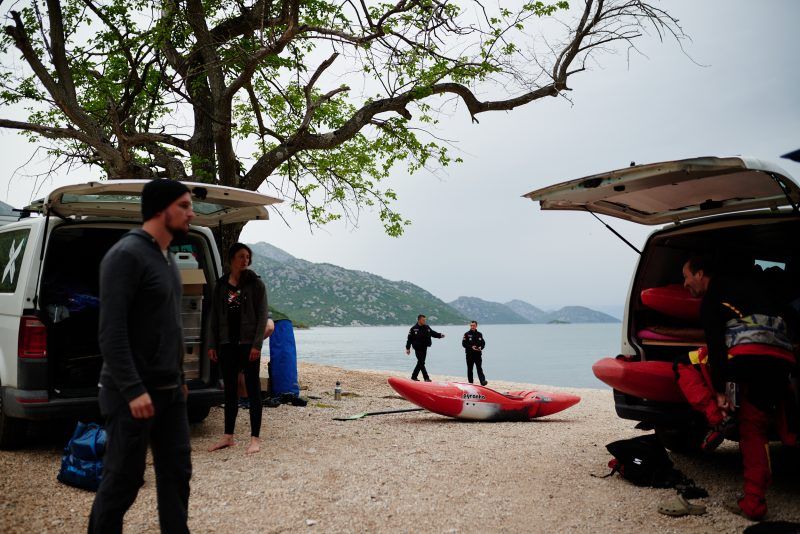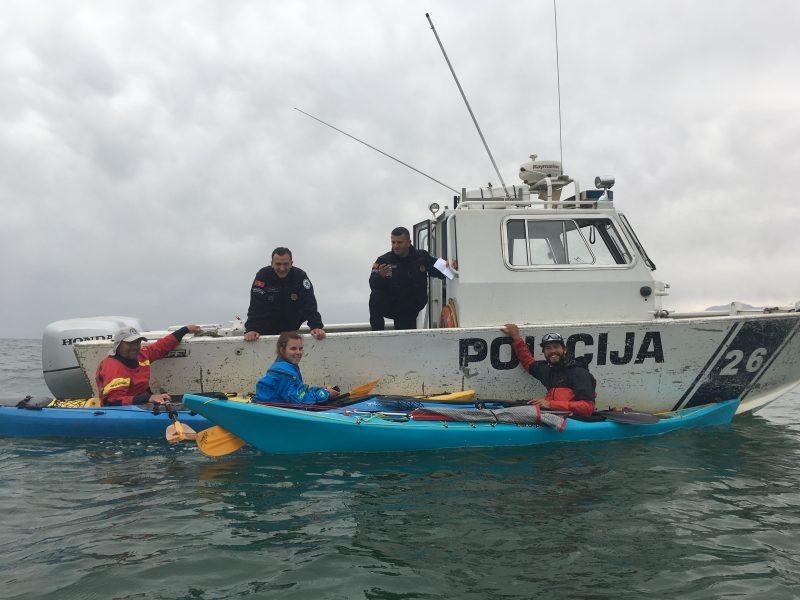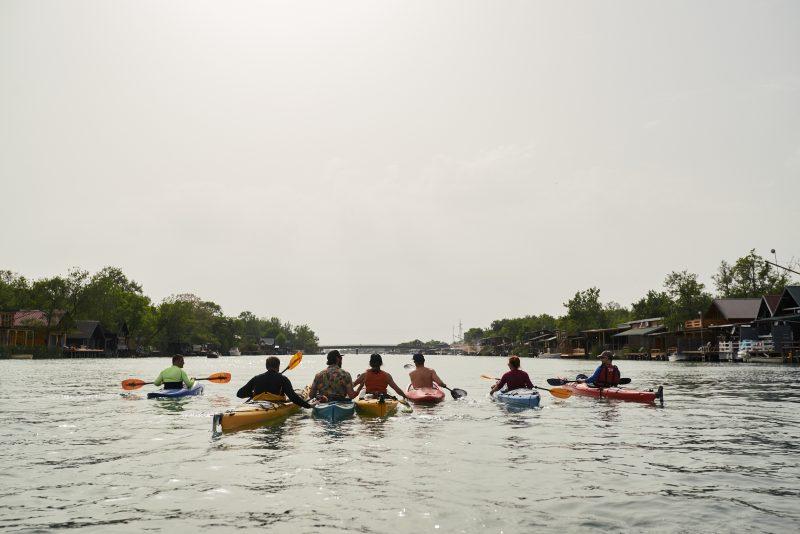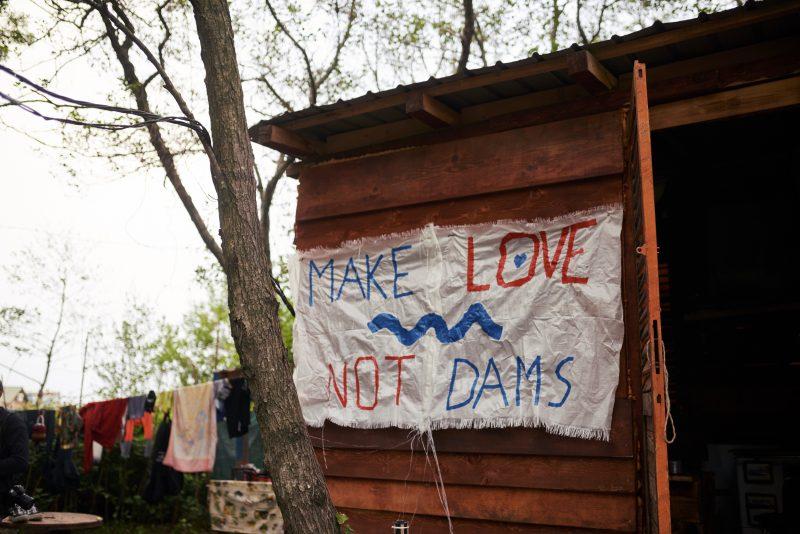Montenegro (continued…)
Even though construction of a tiny hydro power plant at the source of Morača has begun in 2008, Morača remains one of a very few larger rivers in Europe to remain completely free-flowing. The government of Montenegro is looking for investors to invest into four to five HPPs that would completely devastate one of the most beautiful river canyons in Europe …
There we were … we had made it to the final stage of the second edition of Balkan Rivers Tour. Morača attracted the usual supporters; Mostly kayakers, some supporting NGOs, and a few ecologists. The action had almost no local support, be it residents or media. It makes you realize that apart from people that have made it their life mission to study and save nature, it is often only people with a special interest (like kayakers or fishermen), that will stand up for a river in danger.
There are a few rivers in this world that kayakers have fought fiercely for because they are of such recreational value for us. But when it comes to a distant river, that might not be as well known and hence valuable to us, we often simply let it slide, no matter how unjust it might be. A great example is the Valbona River in Albania, which is only getting small attention; mostly from kayakers that have been there before and have experienced its ‘magic’. At the same time, it seems to be almost impossible to motivate the rest of the kayak community to show their support. And that is despite the fact that construction of an HPP there is very clearly illegal and devastating to a classic kayak section (which just happens to be very ecologically important as well).
I fear that being so selective about the rivers we care about will, in the end, contribute to the faster downfall of the most popular ones as well. River conservation should be a part of every kayaker’s agenda. If we grow numb to illegal and unjust river destruction, we are being hypocrites and soon enough we will start losing our credibility as river defenders. As the event at Morača had shown us, in many parts of the world most locals aren’t often very supportive of the river conservation efforts. There are many reasons for that. In the case of Morača, we have heard witnesses of governmental discouragement of touristic investment, people have been bribed and told that the only real value is the hyrdo power. HPPs make money. Money that those very same locals will never see. Their electricity doesn’t get cheaper for them, but at the same time, they will have lost a natural treasure. Something that could power sustainable tourism for years to come.
On the other hand, kayakers have a power of showing locals and the rest of the world the true beauty and value these rivers might have. That has a potential of awakening local resistance, while the support from the outside world leads to its empowerment. Hence, let’s have a look at what we have seen on our week-long journey from the source of Morača, to the sea at Ada Bojana:
Morača day 1 & 2 (source to Mrtvica River confluence): 3, 4, 5
To start the final leg of the tour, we headed to the Source of Morača in a beautiful mountainous area. To our surprise, we found a partially built tiny HPP at the very source. We found a local who told us that one day a lobbyist showed up, gave them 50 euro each as a payoff and told them that they would start the construction. At the time, he didn’t think much of it but after the locals saw what was becoming of their beautiful Morača source (which starts off with a beautiful waterfall), they finally realised that they were losing much more than they thought they bargained for. They organised a resistance and they have been blocking construction ever since.
The HPP here is completely unreasonable. There was barely any water in the river when we were there, at the time of a spring runoff, which means that the power plant would probably stand still for a majority of the year. It would only serve money laundry and green-washing at best. A foreign country would probably buy it to raise its percentage of renewable energy, while people earning money in the process would definitely not have been the locals.
Not far from the source, a kayak section begins. Flows were low but still manageable. The first section is low volume class 4-5 creeking style. There are some larger dangerous rapids in there. We took two days to get to the confluence with Mrtvica River, but you can do it all in one day as well. A few km long section from Morača Monastery to the Mrtvica confluence is a class 3 to 4.
SECTION 1 PUT-IN(IV-V): Bridge 42°52’7.03″N / 19°18’31.80″E
SECTION 2 PUT-IN (III-IV): Morača monastery 42°45’52.80″N / 19°23’25.14″E
TAKE OUT: Morača-Mrtvica confluence 42°43’9.11″N / 19°22’3.91″E
- Beautiful source of The River Morača. Photo: Jan Pirnat.
- Saying NO at the source. Photo: Jan Pirnat.
- Upper Morača put-in. Photo: Jan Pirnat.
- Zan Kuncic on the upper Moraca
- Zan Kuncic on the upper Moraca
- Zan Kuncic on the upper Moraca
- Beautiful Upper Morača Nature
- Beautiful Upper Morača Nature
- Beautiful Upper Morača Rapid.
Morača day 3 (Mrtvica to Podgorica): 3-4 (5)
This section is absolutely gorgeous. Soon after the confluence, you enter the big canyon of Morača. Walls are up to a couple of hundred meters high and there are waterfalls coming in from the sides. There are a few class 4 rapids in this section and a one class 5. The rest are up to class 3, with long flat sections in between. If you know where to stop and scout, most of the river could be run by class 3 kayakers, with a support of a more experienced person. It takes a full day to make it to the end of the canyon in Podgorica.
This could have been one of the best rafting trips in Europe but any type of touristic activities on the river is said to be discouraged by the government. This is a section of river that would have been most affected by the HPPs since long sections of the canyon are expected to be flooded.
PUT-IN: Morača-Mrtvica confluence 42°43’9.11″N / 19°22’3.91″E
TAKE-OUT (if you do full canyon): Bridge by Hostel Izvor 42°28’56.03″N / 19°18’20.21″E
- Big Canyon of The River Moraca.
- One of the class 4 rapids of the big Canyon of The River Moraca.
- Incredible nature in the canyon.
- View from above. Photo: Andraz Fijavz Bacovnik.
Morača – Lake Skadar day 4 (Podgorica to Virpazar)
There is a beautiful class 4 rapid in the centre of Podgorica but it is not worth kayaking past this point. Straight after passing the city centre, completely untreated sewage comes into the river. It is not a beautiful sight and it smells very badly. Shortly after the city, you get to the gravel bars that get constantly excavated by construction companies. It doesn’t get much nicer until the spit into the Lake Skadar. This is where the waterway comes back to life again. It is amazing to see nature’s capability to revive itself. Skadar is a gorgeous lake, the largest in south-eastern Europe, and it is home to tens of endemic fish and bird species. It is believed to have served as a genetic hot-pool of species repopulation after the last ice age. The dams on the Morača river would undoubtedly affect it in a form of sediment and animal transportation obstruction.
Lake Skadar day 5 & 6
We spent the night in a picturesque Virpazar. From here on it took us over two days paddling with sea kayaks to reach the Bojana river. If you are into sea kayaking, this is a well worthy trip, with friendly towns, nice gravel and sandy beaches, good fishing and great food. The local delicacy is a Karp fish and it is delicious. I would suggest you limit yourself to one country at the time since crossing between Albania and Montenegro on the water can get a bit frustrating.
Lake Skadar – Bojana day 7
To reach the sea on the River Bojana, we had to cross the border back into Montenegro again. Bojana starts by flowing fairly fast but it has no rapids. It soon turns into a lazy swamp-like river, that leads you to a coastal party-town of Ada Bojana. The beach here is notorious for kite-surfing and nightlife. We concluded the BRT2 with a night out, which was a welcome change after a month on the road!
- Lake Skadar by Virpazar. Photo: Jan Pirnat.
- Lake Skadar. Photo: Jan Pirnat.
- Different solutions to traveling long distance. Photo: Jan Pirnat.
- Beautiful coastal town beach and another Police visit. Photo: Jan Pirnat
- Special visit to serve our marine border crossing.
- At Ada Bojana… Finally! Photo: Jan Pirnat,
- We made it! Photo: Jan Pirnat.
- Lodging at the end of the tour. Photo: Jan Pirnat.
To voice your concerns, send an e-mail to:
- EU Environment commissioner at calleja-crespo@ec.europa.eu
- Albania (Valbona): Zamir.Dedej@akzm.gov.al, the head of the National Agency of Protected Areas and Cc the Ministry of Tourism and Environment: info@mjedisi.gov.al.
- Montenegro: Ministry of Sustainable Development and Tourism: arhiva@mrt.gov.me
